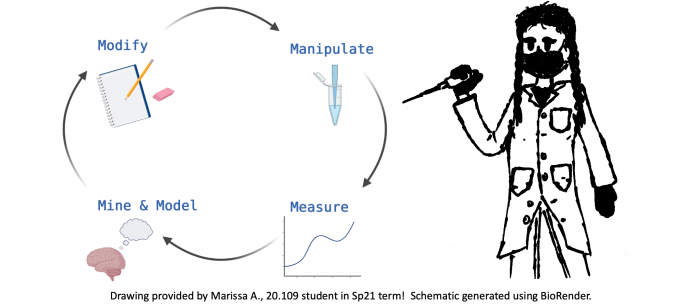20.109(F21):M2D5
Contents
Introduction
Protocols
Part 3: Review journal article
Critically a and discuss the following journal article with your laboratory partner:
Amberg-Johnson et al. "Small molecule inhibition of apicomplexan FtsH1 disrupts plastid biogenesis in human pathogens." eLife. (2017) 6:e29865.
The initial experiment presented by Amberg-Johnson et. al. shows the effect of actinonin on apicoplast biogenesis. The apicoplast is an essential plastid organ that is a key target for drug development in research focused on malaria treatment. Actinonin was identified in large-scale screen of compounds known to inhibit growth of parasite. The subsequent experiments completed in this research served to uncover the mechanism-of-action of actinonin is it pertains to disruption of the apicoplast.
In the context of your research, this article focuses on the next step experiments that can be performed after a drug candidate is discovered from a screen. Though you can use this article as guidance as you consider the experiments that could follow your screen, remember that the specific next step experiments should be related to the protein target and drug candidate(s) identified in your project. For this exercise, the focus in on how the data are organized and presented.
In your laboratory notebook, complete the following with your partner:
- Why is the apicoplast a promising target for anti-malarial drug development?
- Why have attempts at developing broadly effective drugs that target the apicoplast been unsuccessful?
- Why is the approach used by the researchers in this article more promising?
- List the figures that are included in the article. For each figure:
- What is the main conclusion / finding in each figure?
- Which panel best supports the main conclusion / finding? Is more than one panel needed to fully support the main conclusion?
- Are you convinced by the data? Do you agree with the main conclusion?
- Are the figures organized in a coherent story?
- Write transition statement that connect each figure to the next. A transition statement should very briefly summarize the findings of a figure and state what those findings motivated the research to do next (ie what is the next experiment?).
Reagent list
Next day: Perform secondary assay to test putative small molecule binders
